Re-sawing, the process of cutting a board into thinner pieces of the same length and width, opens up a world of woodworking opportunities. Re-sawing allows you to create wide panels from narrow boards, thin pliable pieces for bent laminations, thin sheets of veneer, and even turn logs into lumber. Like any woodworking skill, re-sawing takes time and practice to master.
How to Re-Saw Wood on a Bandsaw
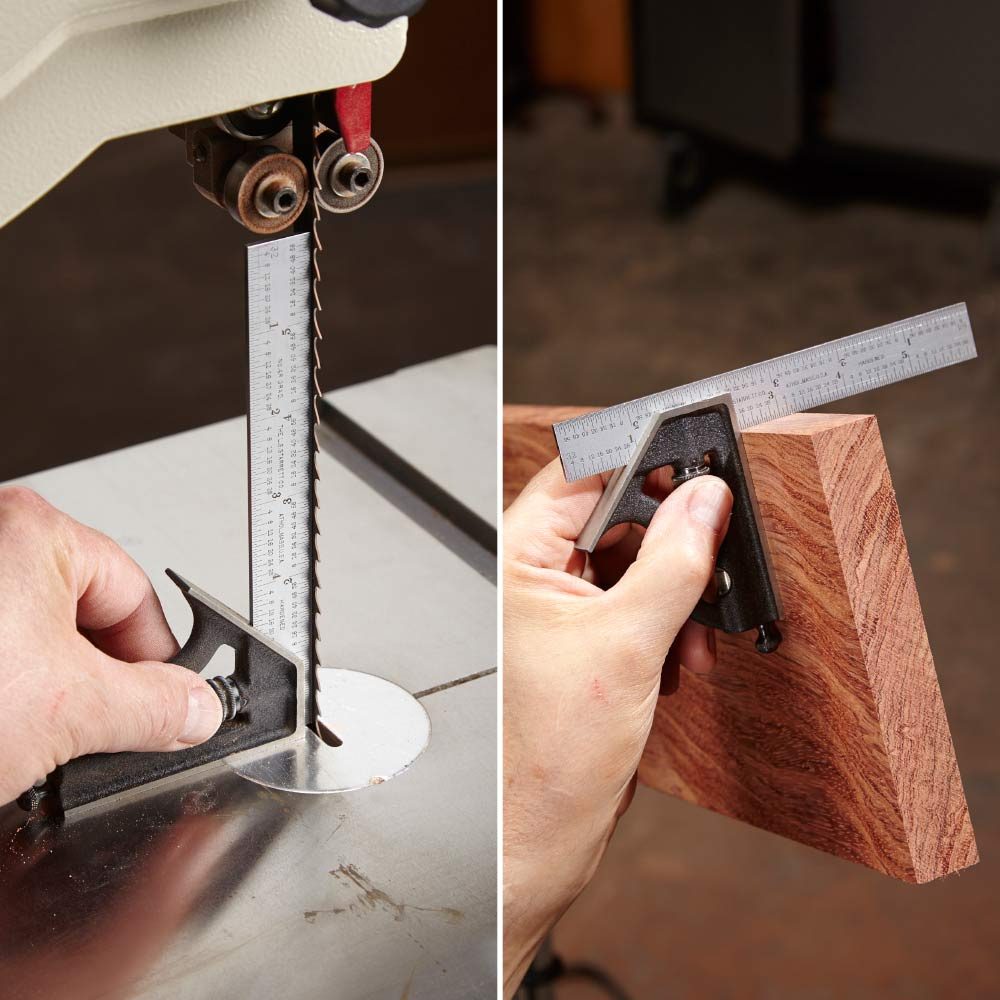
Square the Bandsaw Blade and the Board
Making sure the bandsaw blade is perpendicular to the table is especially important when you’re re-sawing a wide board. For the best results, raise the guidepost all the way and use a square with an arm that matches the saw’s re-saw capacity (left). Adjust the table so no gaps appear between the blade and the arm. Next, make sure the board has a square corner. That way it will ride flush against both the tall fence and the table during the cut.
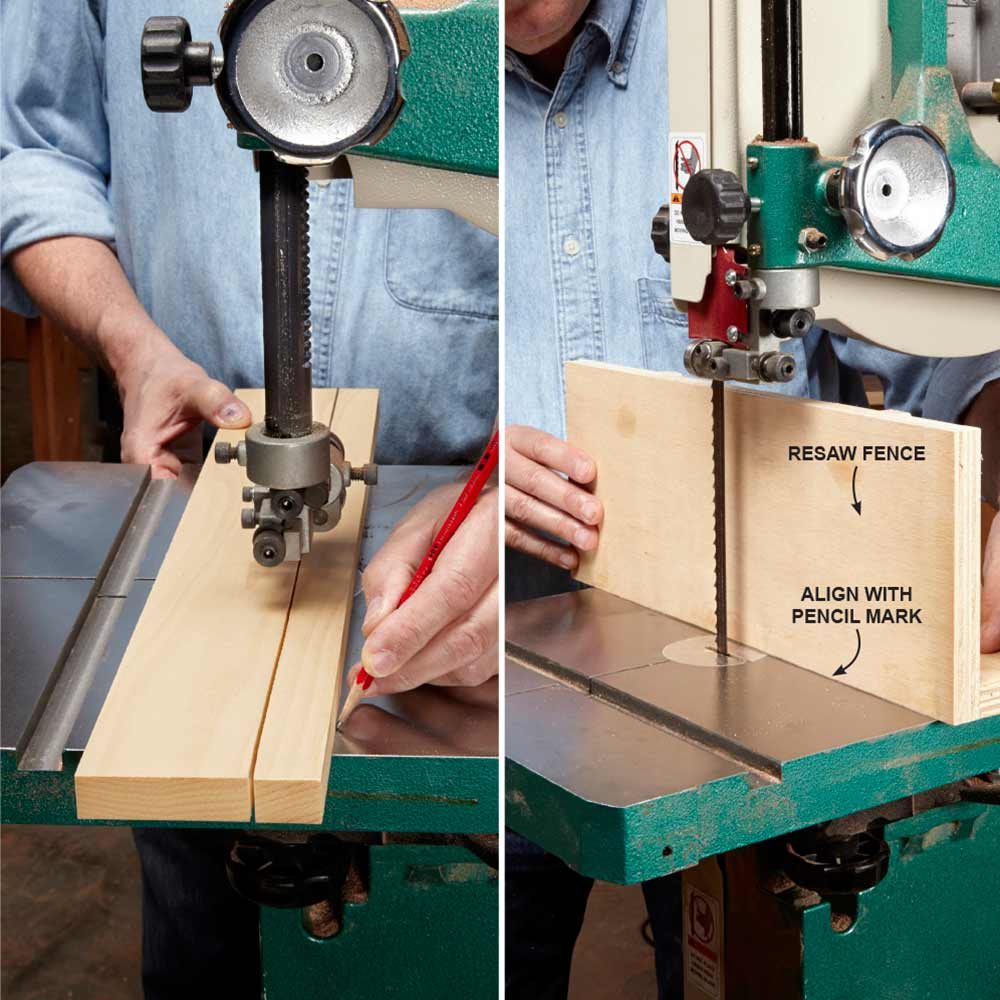
Set the Bandsaw Fence at the Correct Angle
It sounds crazy, but on most bandsaws, you have to angle the stock to make a straight cut. Finding this “drift angle” and setting the fence to match it is crucial to successful re-sawing.
Start by marking a straight line on a scrap board, parallel to its edge. Then follow the line to make a straight cut, angling the board as necessary. When you’ve cut far enough to establish the drift angle, hold the board in position and transfer the angle to the saw’s table.
Use the line you’ve marked to position the fence at the same angle. Then make test cuts and adjust the fence as necessary to fine-tune the setup until the stock stays flush against the fence, without binding against it or wandering away.
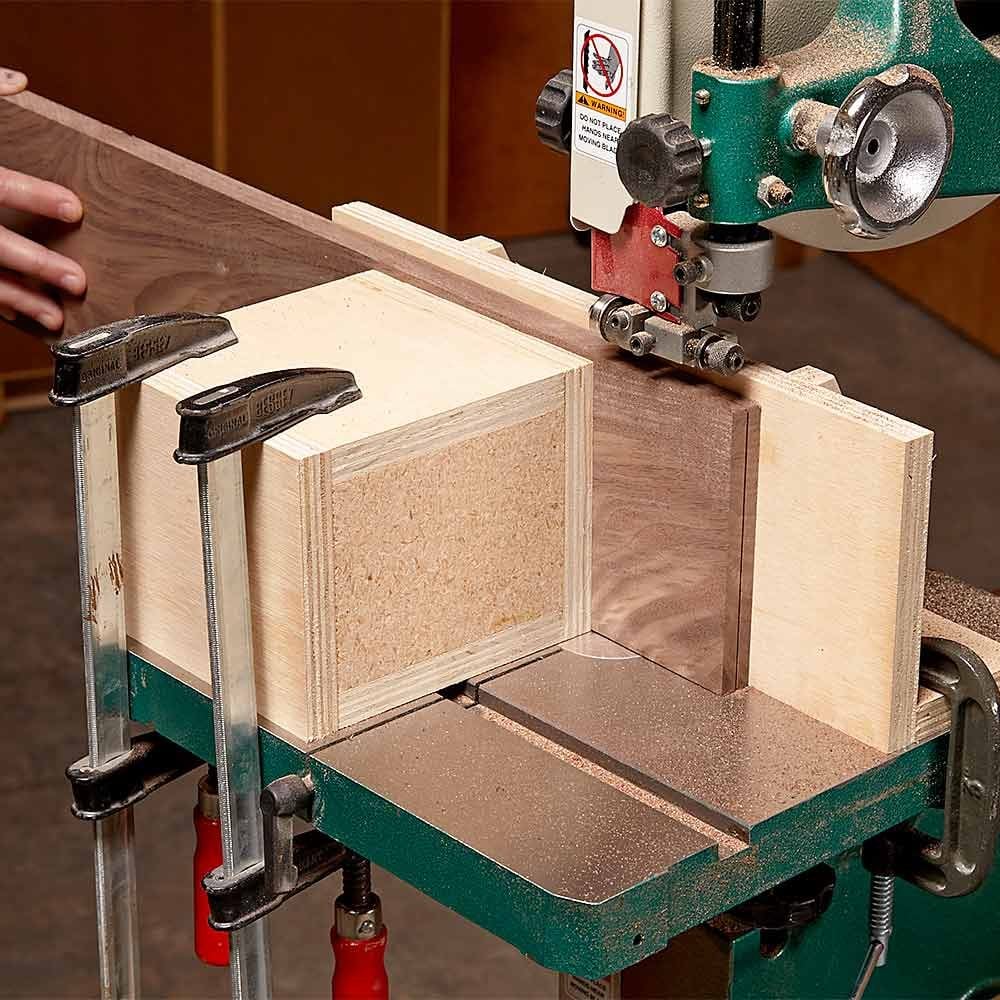
Box in Long Boards
Re-sawing long boards is a breeze with this setup, because it automatically holds the board against the fence so your hands are free to feed the board. Make the box about as tall as the board is wide, about as wide as the distance between the blade and the front of the table, and about as long as the distance between the blade and the table’s right edge. Position the box in front of the blade and clamp it so the board fits snugly but slides between the box and the fence without binding or wobbling.

Double Your Re-Saw Capacity
Imagine creating a 24-in.-wide book-matched tabletop or turning a 12-in.-diameter log into lumber. Installing a riser block on a typical 14-in. band saw increases its re-saw capacity from 6 to 12 in. Check with the manufacturer to see if a riser block kit is available for your saw.
The kit includes the block and all the other parts you need to stretch your saw, such as a longer guidepost and blade guard. Of course, you’ll also have to buy new, longer blades, and if your bandsaw bogs down easily when re-sawing those super-wide boards, you may have to install a larger motor to handle the increased workload.
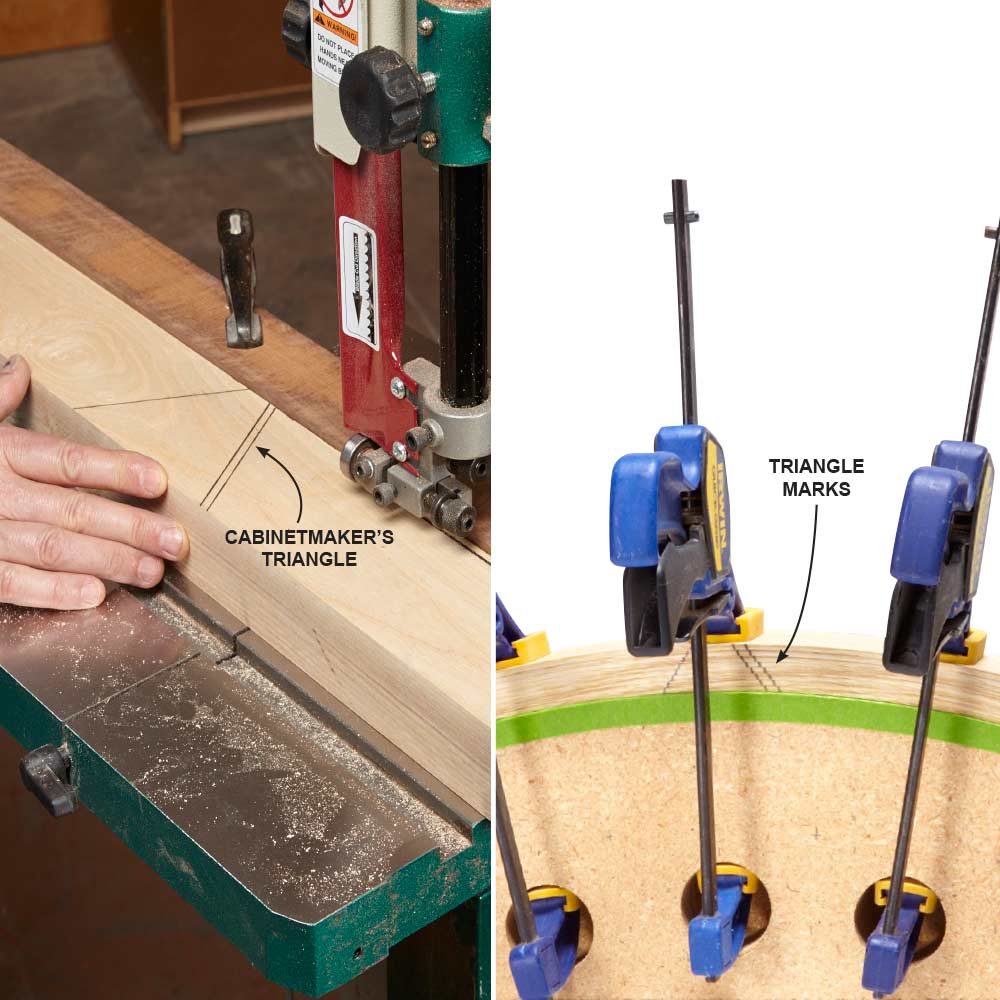
Make it Easy to Stack Re-Sawn Pieces
Re-sawing a board into thin, pliable pieces allows you to create curved shapes by bending and gluing the pieces around a form—a process called “bent lamination.” Marking the board with the cabinetmaker’s triangle allows you to reassemble the thin pieces as they came from the board, so the lamination closely resembles a single piece of bent wood.

Easy Re-Sawing
Partially re-sawing a board on your table saw makes re-sawing with your band saw easier, because the blade has less to cut and the saw kerfs keep it from wandering. It’s a great method to use if your band saw bogs down during full-width re-sawing, and in many cases, it can save time by allowing you to re-saw without installing a re-saw blade. Even if you can completely re-saw the board by raising the table saw’s blade, many pros prefer this method because it’s safer to finish the cut on the band saw.
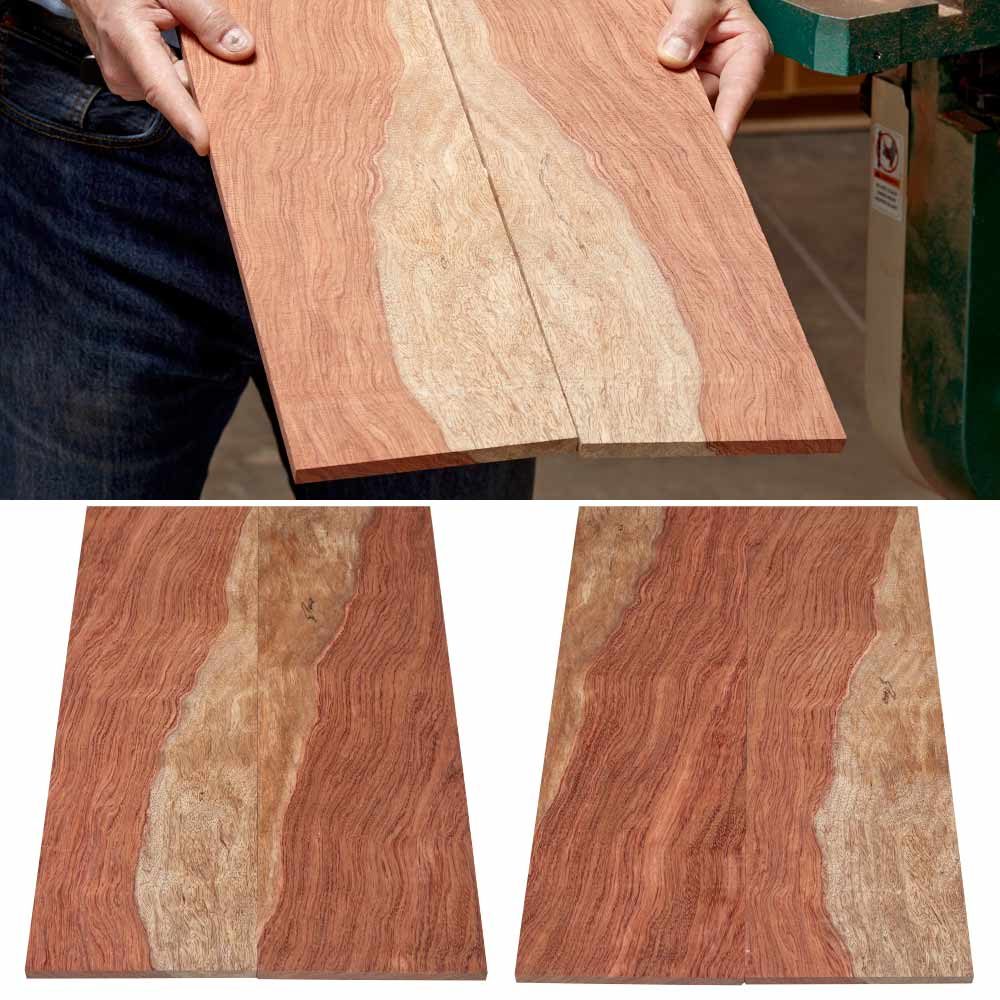
Create Stunning Grain Patterns
Opening a pair of re-sawn pieces for the first time is a favorite part of re-sawing. That’s because re-sawing transforms an ordinary—or even homely—board into something extraordinary. It also turns a narrow board into a panel that’s twice as wide. Opening the pieces like a book—called book-matching—creates a mirror image. And that’s just the start: By simply rearranging the two pieces, you can create other patterns that are completely different but just as spectacular.